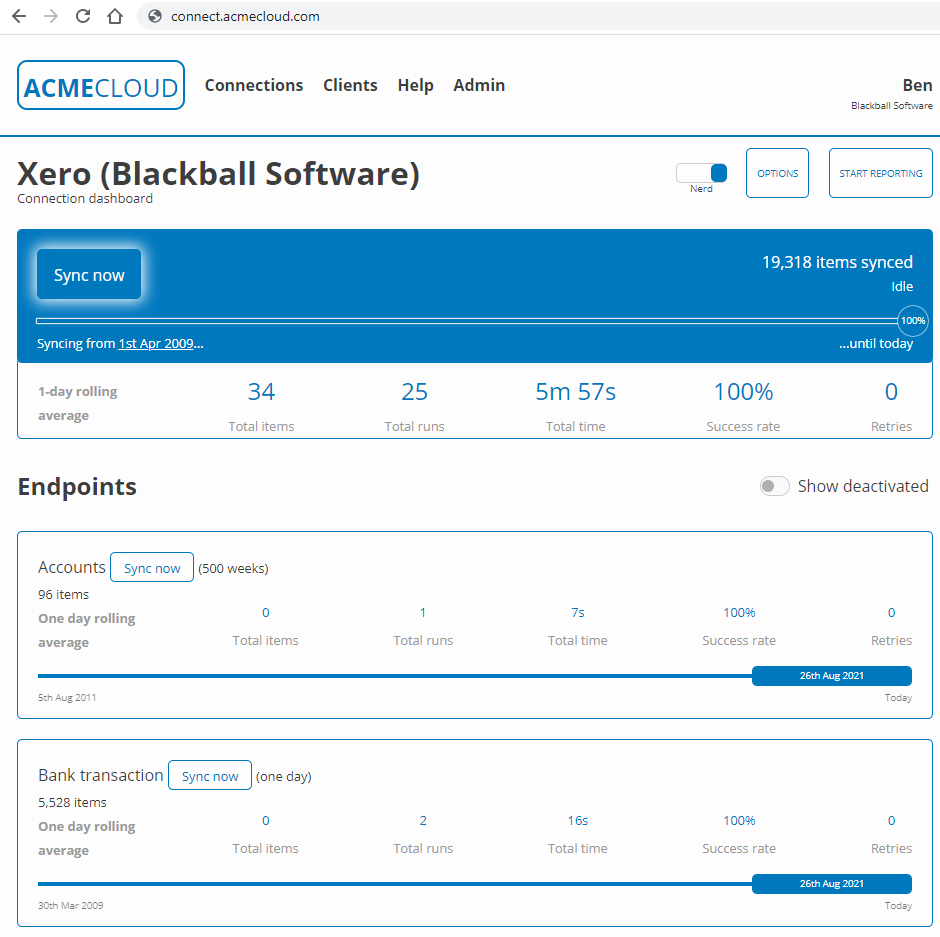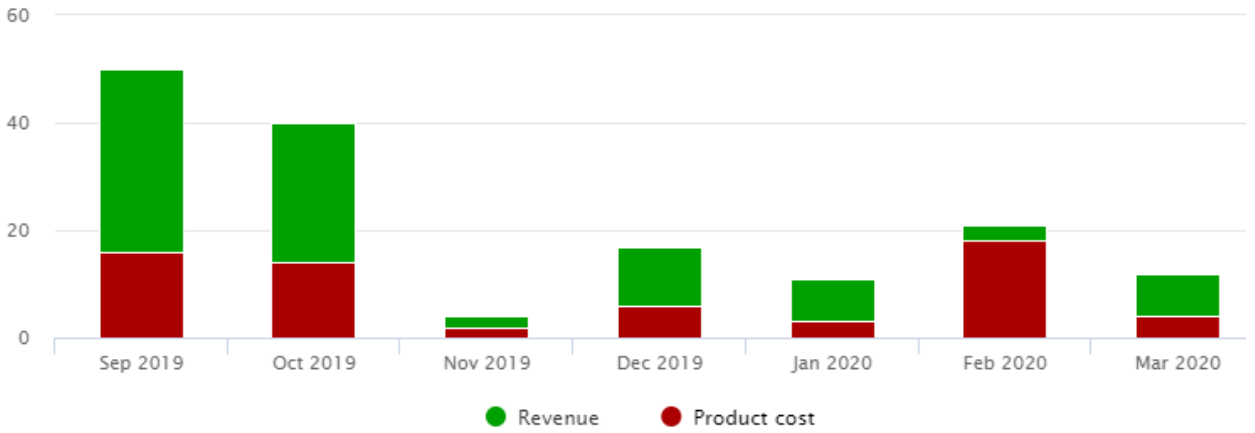From SaaS to DaaS
This article is aimed at owners or managers of other SaaS platforms. I’m going to describe SyncHub’s white-labelled Data-as-a-Service offering, and how you can easily clip it onto your own SaaS offering - increasing your MRR and making your customers happier.
You know, I actually spent a few hours labouring over another version of this article. It had a story about a fictional SaaS company, and the problems they had with data integration and reporting. I had before-and-after charts - like you needed to be spoon-fed this stuff.
But I realized - I was speaking to the wrong audience. I’m a nerd - you’re a nerd, so I’m just going to describe what we do - complete with acronyms and yes, lots of bullet points (they’re efficient). If you’re not technical, go grab your resident developer. If you are technical - better go get the person that holds the purse strings.
If you’re both - awesome, let’s be friends.
TL;DR;
SyncHub’s architecture has a “partner” tier built into it. This is what we use to offer our White Labelled platform, for example. Furthermore, I am a big proponent of “eating your own dogfood” - at least with respect to software development - and as such, the SyncHub app that you love and use is actually just a single “partner” as far as our software is concerned. We have no more or less functionality in https://app.synchub.io than any of our partners have in their own white-labelled systems.
This architecture allows us to augment your Software-as-a-Service company with SyncHub’s Data-as-a-Service. Consider a fictional SaaS company called ACME Cloud. Well, this is what their DaaS would look like:
All ACME Cloud has to do is refer interested customers to https://connect.acmecloud.com, and voila - everybody wins:
the customer gets a much-needed service
SyncHub gets a new customer
ACME gets a slice of the MRR deposited in their account each month, while SyncHub takes care of everything else
Everybody likes a happy ending, right? If you can already see the benefits and want to get started - get in touch and we’ll have a chat. For the rest of you, let’s talk in a little more detail about some of the aspects - both good and bad.
The pros…
I’d like to quickly elaborate on some of the more obscure benefits to this offering.
Happier - and smarter - customers
First of all, your customers will now be able to pull in data from their other cloud services, and cross reference this with data from your own SaaS. This is incredibly powerful.
Even if a customer doesn’t want data from other SaaS platforms though, there’s a chance that they have multiple accounts with you. For example, for legal or privacy reasons, many hospitality customers create different accounts for each country they operate in. It is likely that any reports your system currently offers are only provided at the account-level, making aggregate reporting across the whole group impossible (and technically, very difficult to implement, as I’m sure you know). With SyncHub, this is no longer an issue.
Reduce your own server costs
Unless you have built your own data warehouse, any reports that you are currently providing will be coming straight off the master database driving your SaaS. Intensive queries will lock the database and slow down the performance for all your customers. By moving your customers to the SyncHub infrastructure, this will no longer be an issue.
Or, perhaps you have some tech-savvy customers who are already using your API to extract data for reporting. It is likely that these queries are varied and unpredictable - impossible to index and leaving your system open to dangerous spikes in query CPU. Conversely, SyncHub’s queries are predictable and consistent - easy to anticipate and index accordingly.
More on BYOD
If you’re worried about your customers’ data being held elsewhere, don’t. Our BYOD option will put your data wherever you like it. Plus, as it’s your own server, you are at liberty to scale or index the database as you see fit, or augment it with additional data sources.
You can even use it to pull data back in to the embedded reports already in your SaaS.
Let’s reiterate that again - if you’re a POS company, for example, you could take your existing “Sales by month” report…
…and overlay it with COGS data pulled from the customer’s Inventory Management system…
…holy *** * - that is amazing. And all that is required of your developers are their regular SQL skills - SyncHub will take care of getting the data to their fingertips. In real-time.
…and the cons…
Of course, this is not right for every SaaS, and I’m sure you have some questions. Let me anticipate a few now, but if there are any others, get in touch and we’ll have a chat.
I’m concerned about exposing my brand
Fair enough - I would be too. We prefer that our partners white-label, because this increases the legitimacy of our offering in the eyes of their customers. But you absolutely don’t have to. Each of the following aspects of branding is independent and you can pick/choose how much you want to do:
URL. Use a sub-domain under your own domain (e.g. connect.acmecloud.com), or we can provide a sub-domain under synchub.io (e.g. acmecloud.synchub.io)
Colours/Logo. You can use your own styles, or and leave the site branded as SyncHub. Or, a mixture of both.
Payments. We support both Stripe’s Destination Charges and Direct Charges (I’ll let you research those yourself). Or, if you don’t want any automation, we can just do the payments for you and we’ll sort out the MRR split out-of-proc.
Customer Support. You can choose to have customer support requests directed to your own email, or we can take care of it for you. In the case of the former, this relegates our own support team to “second tier” support for your guys
Our customers don’t want this
Yes they do - we’re proof of that because they are signing up to us every day. Furthermore - quite a lot of them are frustrated with your current report offerings…
If our customers are already signing up, why are you offering us a split of the revenue?
Your customers mostly come to us through word-of-mouth, or organically through search engines. It’s a trickle, but we know that if we can get our service in front of them, this could become a flood. Better, we think, for us to have a smaller piece of a large pie, right?
Our developers could build this
Of course they could. But DaaS is not your core competency, and every bit of ETL code you write is code that you will have to continue supporting through the years. DaaS is your classic 80/20 rule, and it is hard - that’s why platforms like SyncHub exist in the first place. I’ve talked about it in this blog here.
To conclude
SyncHub has a symbiotic relationship with other SaaS companies. Without your data and customers, we could not exist. But by embracing SyncHub, and DaaS in general, you can provide your customers with an additional benefit and reason to stick around longer.





